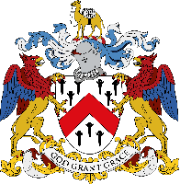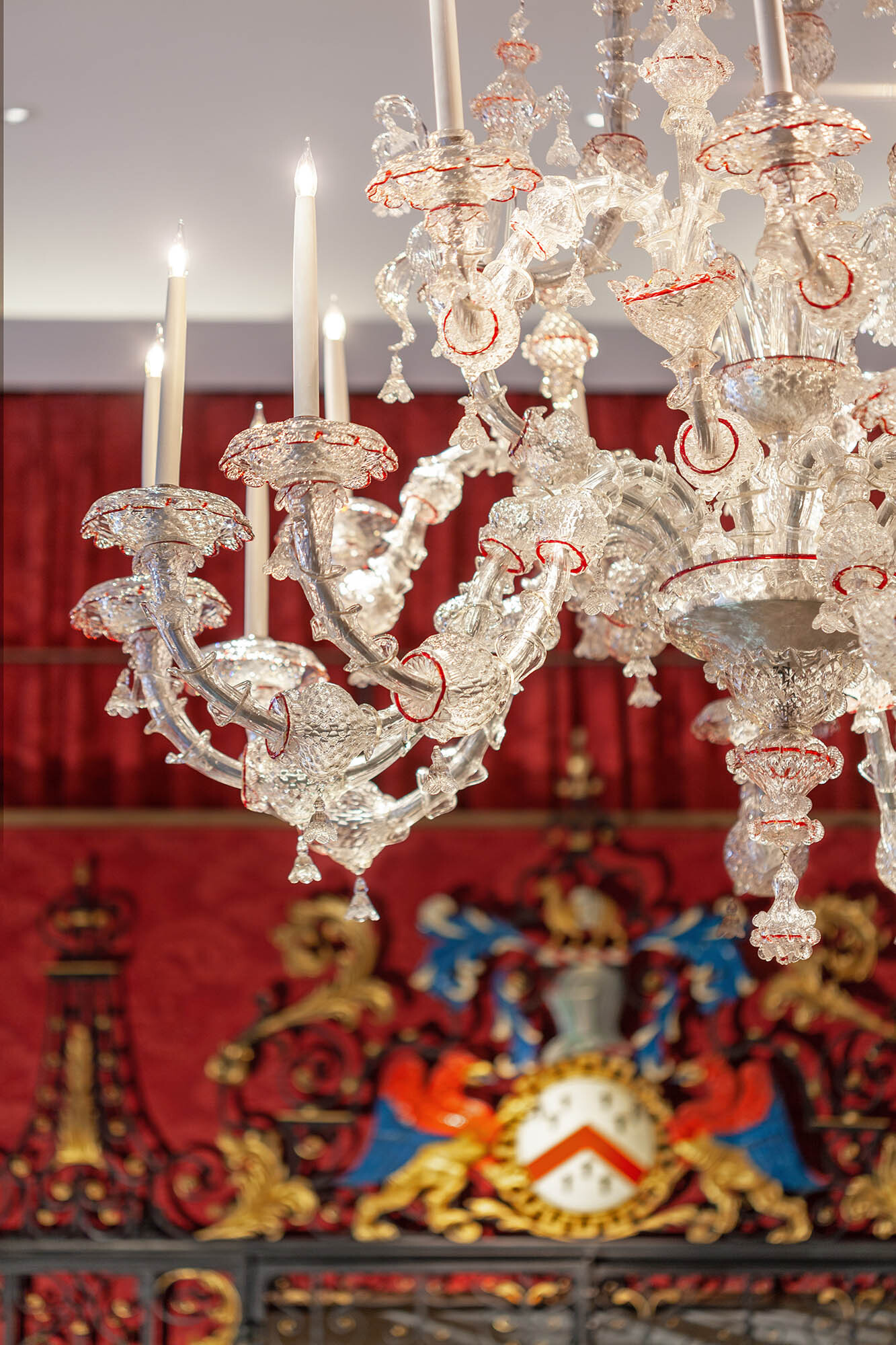The Grocers’ Company has always been proud of its association with William Pitt the Younger, who became an Honorary Freeman in 1784 following in the footsteps of his father the 1st Earl of Chatham. Pitt died on 23rd January 1806. Four months later, on 18th May, the Grocers’ Court Minutes record that ‘A Motion was … made and seconded that a Picture of the late Right Honourable William Pitt should be purchased for the Company and upon the Question being put, it was carried unanimously in the affirmative’. On 19th February 1807, the Company ‘Paid [160 guineas to] Mr Hoppner for a Painting of the late Right Honourable William Pitt’ plus £36 10s for the frame. The portrait was destroyed in the fire at Grocers’ Hall in 1965. So what did this portrait look like? The 1930 catalogue of The Principal Objects of Interest at Grocers’ Hall gives no indication.
An invitation from Grocer Henry Knapman to view a portrait of William Pitt now hanging in H.M. Treasury stimulated a drawing together of information relating to the Company’s lost portrait. The full length portrait shows Pitt with his right hand resting on a table touching a letter. The gilt label reads ‘From the portrait by John Hoppner at Grocers’ Hall, destroyed in the fire of 1965’. It had been commissioned from the artist William Alfred Menzies and was ‘presented by William Lockett Agnew to Herbert Asquith for 10 Downing Street, 1910’ and can be viewed here. The Grocers’ Company had also given permission for an earlier copy three years previously. In the Court Minutes for 3rd July 1907, we learn that ‘the Carlton Club [requested] to make a copy of the Hoppner Portrait of William Pitt’ and Mr Dent recommended that the Company ‘agreed on condition that there is acknowledgment that the original is at Grocers’ Hall. I contacted the Club and it is indeed still there, and hangs in Wellington Dining Room. Operations Manager Chris Hever added that the copy was made by Dorofield Hardy and has been recently restored. A black and white photograph of the Grocers’ Pitt portrait lies hidden in W.W. Grantham’s scrapbook of his year as Master 1906-1907, when the Carlton Club version was made.
So now we know what the Grocers’ portrait looked like, but what was the original source for this painting? Was it Hoppner’s portrait commissioned by Henry Phipps, 1st Lord Mulgrave and begun in December 1804, which became the centre of a thriving market for reproductions? A letter from Mulgrave’s son, Lord Normanby reveals that ‘It had not been sent home when Pitt died (George Clint had been engraving it). Then came applications from the most intimate friends of the deceased statesman for copies. All those made before the original was sent home were by express permission of Lord Mulgrave. After that I know copies of copies were multiplied to any that wished them’. The portrait was then exhibited at the Royal Academy in 1806, and sold in the Burdett-Coutts sale by Christie’s in 1922, when it went to Cowdray Park, where it still hangs. Thanks to Grocer James Roundell’s links with the art world we were able to ascertain that the Grocers’ Company portrait was not an exact copy, but a less common version.
The Cowdray original shows Pitt with his right hand touching his black and gold Treasury robes. A three-quarter version of the latter can also be seen in the Government Art Collection, seen here. Rather amusingly the caption in the online catalogue asserts that the original Pitt portrait, commissioned by Mulgrave ‘hung in the Grocers’ Hall (of the Grocers’ livery company) in the City of London, but was destroyed when fire spread through the building in 1965’. Thankfully not true! The Grocer version shows Pitt with his right hand on a table touching a letter (I wonder if it was a significant one?). To add to the confusion of copies engravings of both versions were made by George Clint. An engraving of the Grocers’ version was also made by Thomas Bragg and published in 1810, ‘From the picture in the possession of the Duke of Cumberland’ seen here.
It is still unclear however who painted the Grocers’ portrait, despite the fact that the Company dealt directly with Hoppner. Demand was great for copies. While the Russian Ambassador offered ‘any money provided it be executed by Hoppner’s own hand’ in March 1806, R. R. Reinagle painted 4 whole-lengths, taking 20 guineas each while Hoppner himself took 80 guineas, while Samuel Lane was at work on copies of Pitt early in 1807. As Henry Knapman suggested, perhaps the Company should commission a copy of the copy of the copy?





